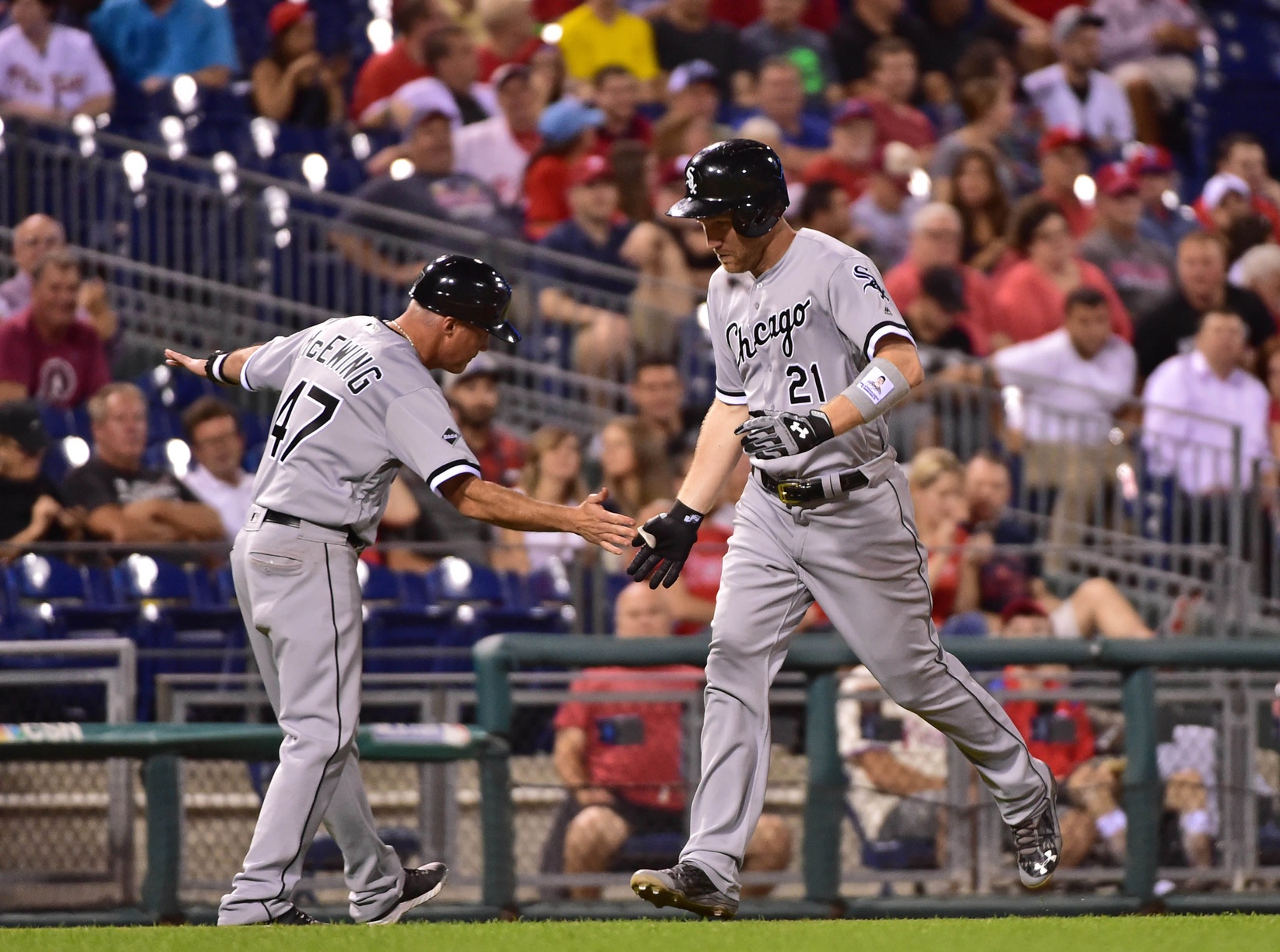A big point of concern for Todd Frazier coming into this year was his tendency for second half slides. Sort of like his teammate Chris Sale, Frazier had a history of fading down the stretch, posting a worse triple slash line after the All-Star Break than he did before it for the last three seasons in a row. Unlike Sale, slumping second half Frazier did not have the stats of someone teams would love to have aboard regardless. For his career, he’s a .238/.297/.420 hitter, which is playable–certainly by White Sox standards–but perhaps not cause for sending out Frankie Montas, Trayce Thompson, and, that other guy they sent. Or maybe it is, since both those guys have been so, so injured.
Concerns were understandably heightened when Frazier hit 25 first half home runs, but still managed to slug under .500 somehow, compiling a .213/.305/.476 line, helped in no small part by a .202 BABIP. If Frazier didn’t make much hay in the first half, what on Earth would happen when his second half fatigue set in?
Which is, obviously, making an assumption. Major league baseball has a really long season, and at least comparing it something like NFL football, has some pretty long careers for its regulars. But for trying to determine something like a real tendency for second half decline, our data can seem fairly short. Some players have approaches and swings that are less physically sustainable, or drain their leg strength more than others, some can just lack stamina, but three seasons also leaves us entirely in the purview of discrete events–an injury, personal issues, ennui from playing for garbage teams with no future, participating in the Home Run Derby–being at fault rather than some larger, meaningful flaw in Frazier’s game. Not to mention that entirely different trends, developments and decline are all affecting him at the same time.
Frazier is sporting a .233/.296/.435 line in the second half, which is no great deviation from his career, and also a clear step worse than his first half, but not the waterfall collapse of the last two seasons where he lost hundreds of points of OPS like it was nothing and became a functionally different player. Surprisingly, despite his power production sagging a bit–though generally a .200 ISO from a third baseman is pretty cool–Frazier fixed a lot of the nagging issues in his batted ball profile.
Hopes that his .202 BABIP would rise were muted by a Gordon Beckham-like 21.4 percent infield fly rate on top of an already extreme fly ball approach that had seen his doubles disappear. For most approaches, 38 home runs indicate that someone is hitting the ball very hard all the time, but Frazier wasn’t set up to have much impact if he wasn’t clearing the fence or taking a walk. In the second half, Frazier is now only popping 14.1 percent of his balls in play, which won’t impress Joey Votto, but is in the immediate neighborhood of his career averages. He also has improved to a .259 BABIP, which is also certainly not good but something very livable for a guy who is going to hit 30-to-40 home runs.
It’s worth noting that those two figures look more normal in Frazier’s career in large part because of his transition to a big power, lots of pop ups, fly ball approach type of hitter over the last two seasons which, after all, represent over 40 percent of his not that long major league career.
Before the season, I would not have recommended a contract extension for Frazier given the level of instability in his profile and given that any deal would be locking in his age-32 season and beyond, and I probably don’t need to belabor that point any further after this season. But it’s worth noting that in the wake of his breakout 2015, PECOTA still pegged him as a typical decent starter who would likely put up a solid 2-WARP season and…
BP–1.8
FanGraphs–2.1
Baseball Reference–3.0
The Sox did just fine running out Frazier as an everyday guy, and if we buy the optimistic side–and maybe even if we don’t–of his batted ball profile that he can stabilize as a player that hits in the .220-.230s, takes his walks, and clocks a ton of dingers, they will be well-advised to send him out again as part of a team looking to win in 2017. If the Sox just stop expecting him to carry the offense at all, they will be less disappointed if he can’t do it for the entire season.
Lead Image Credit: Eric Hartline // USA Today Sports Images
